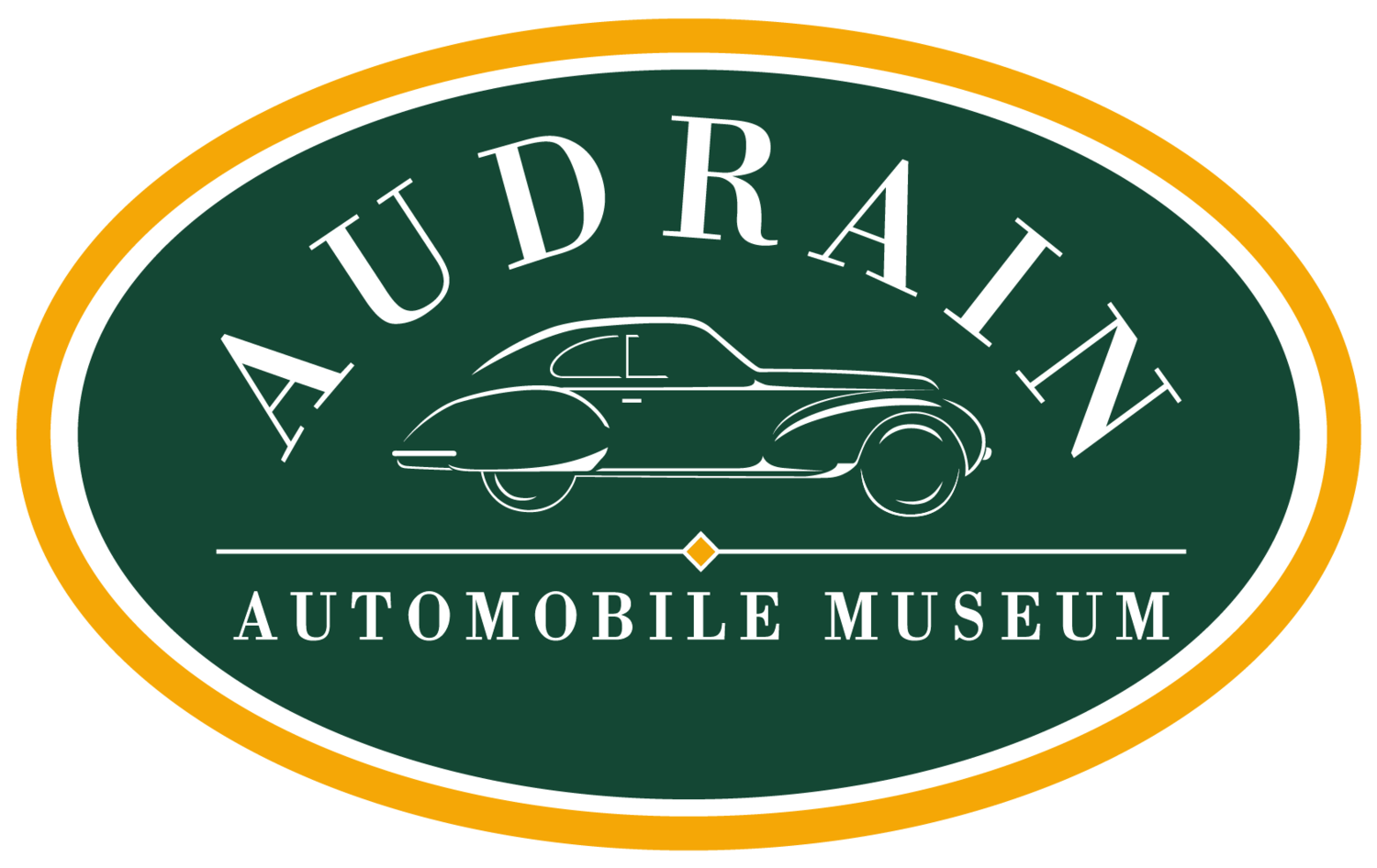1924 Harley Davidson JDCA “Model J”
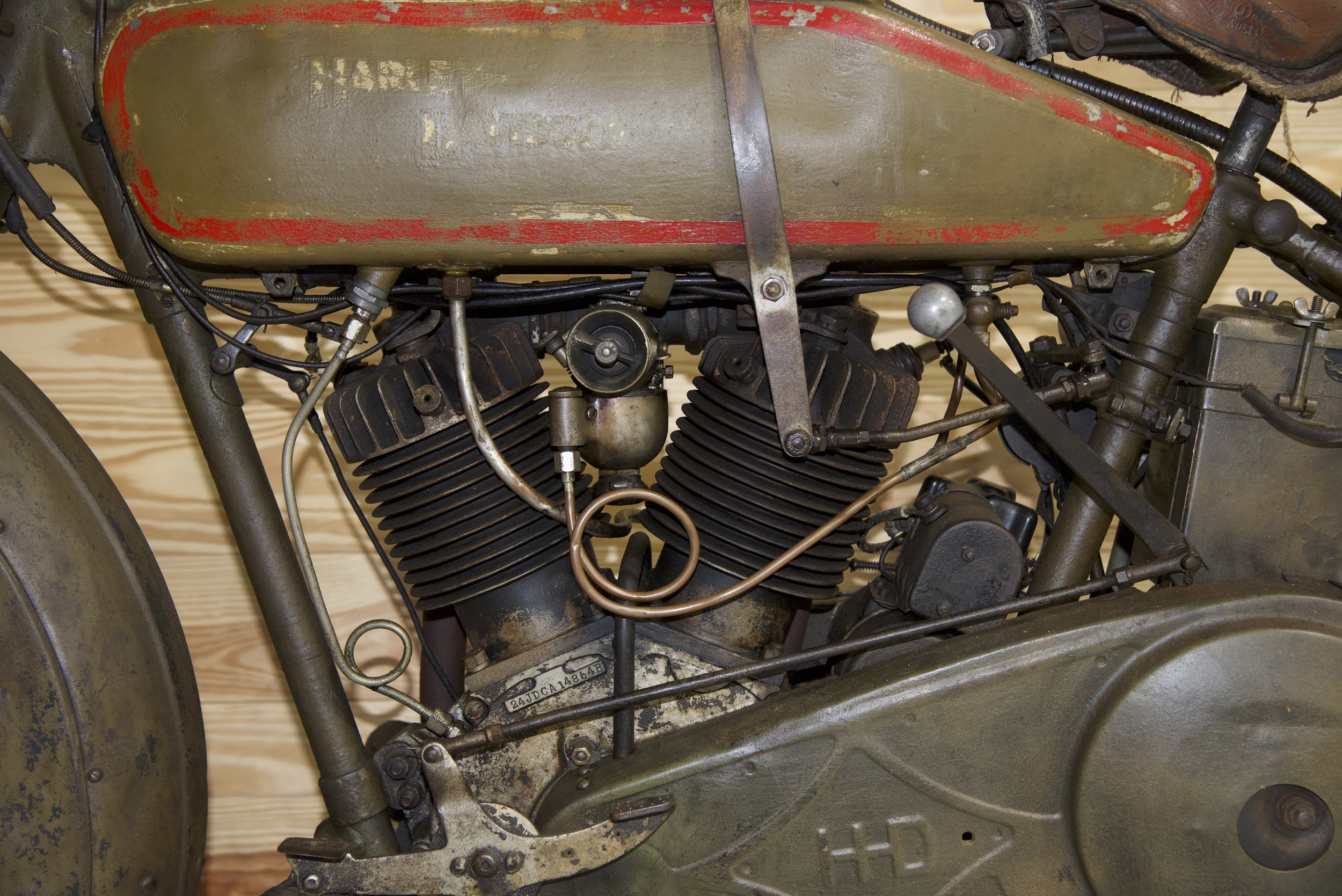
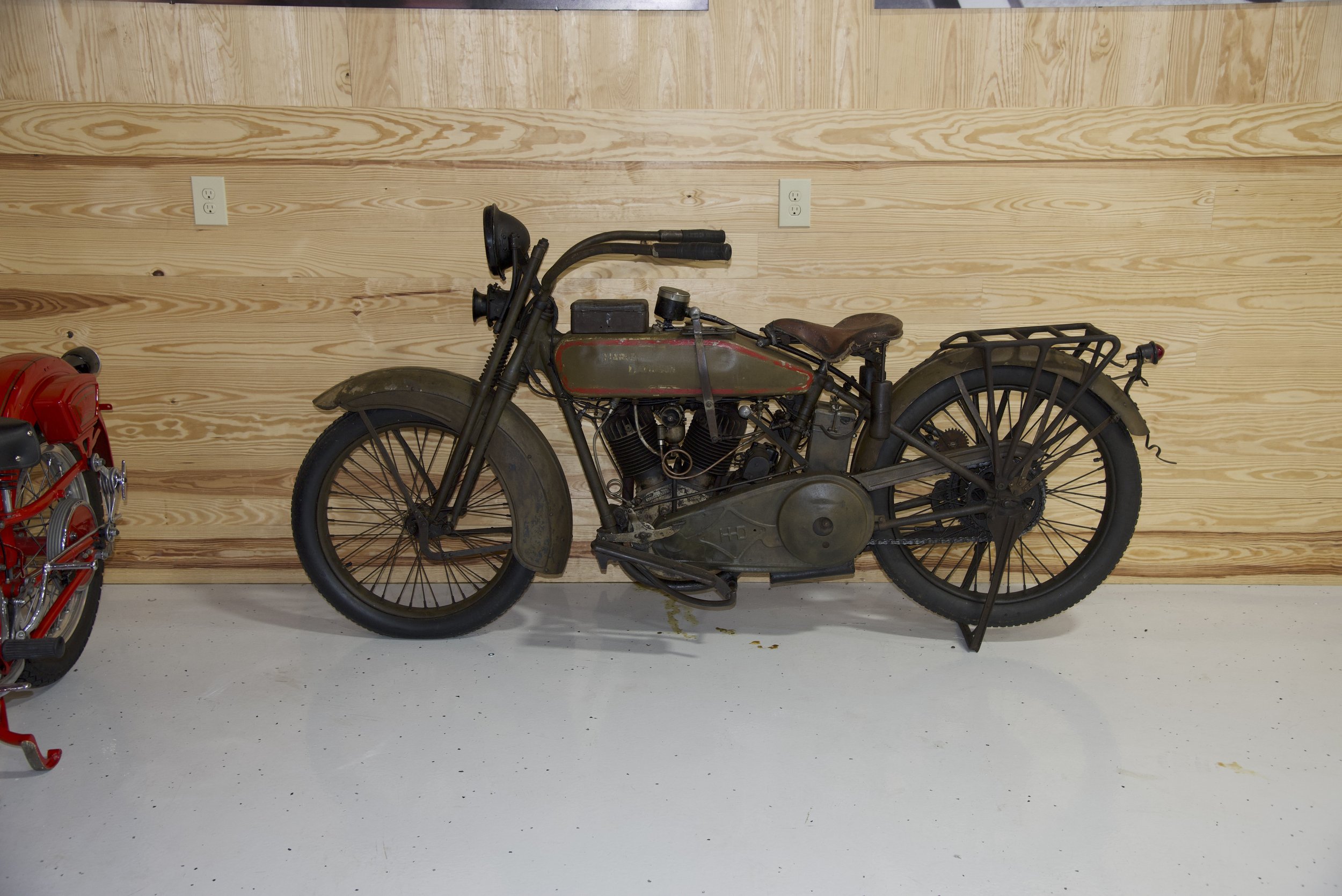
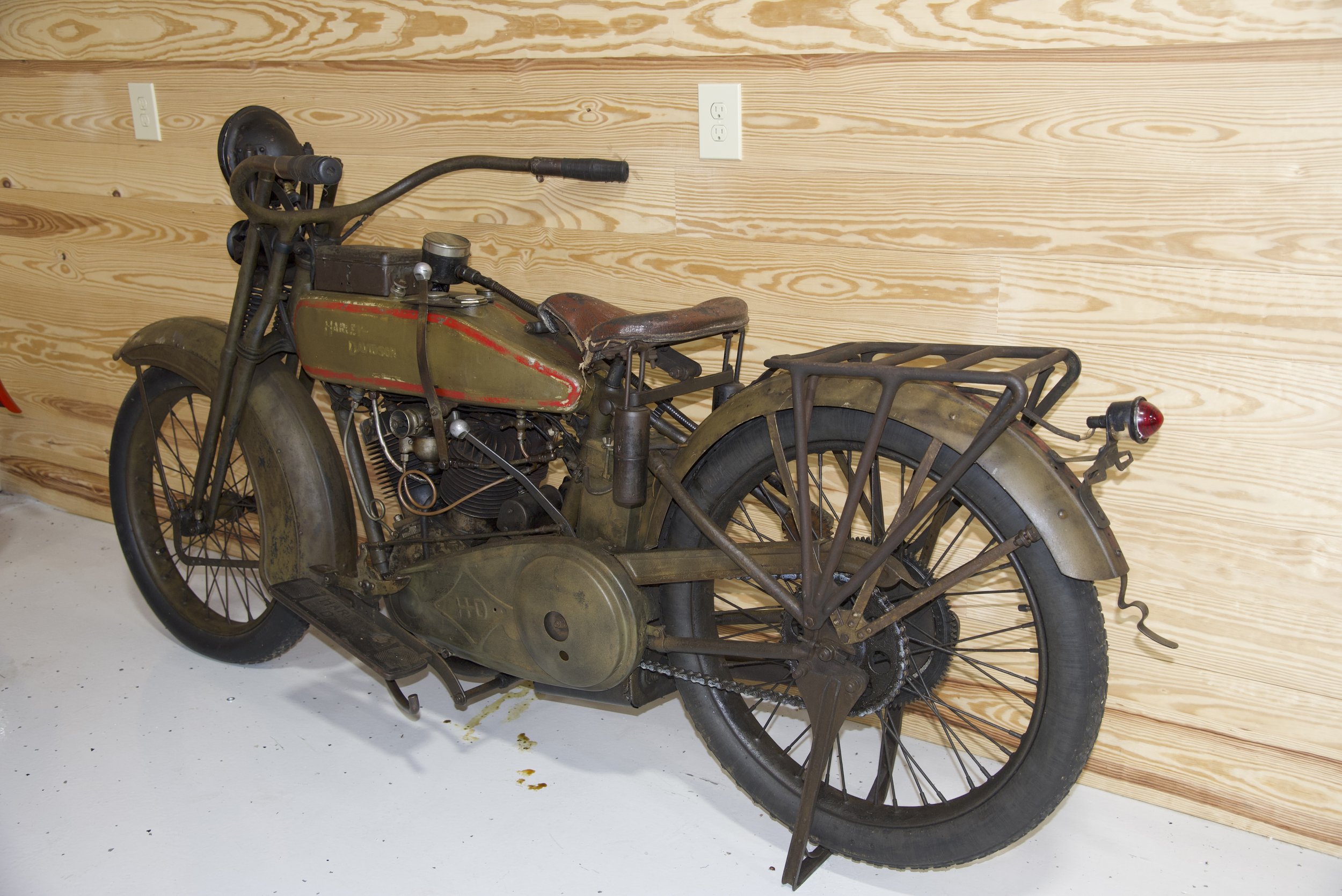
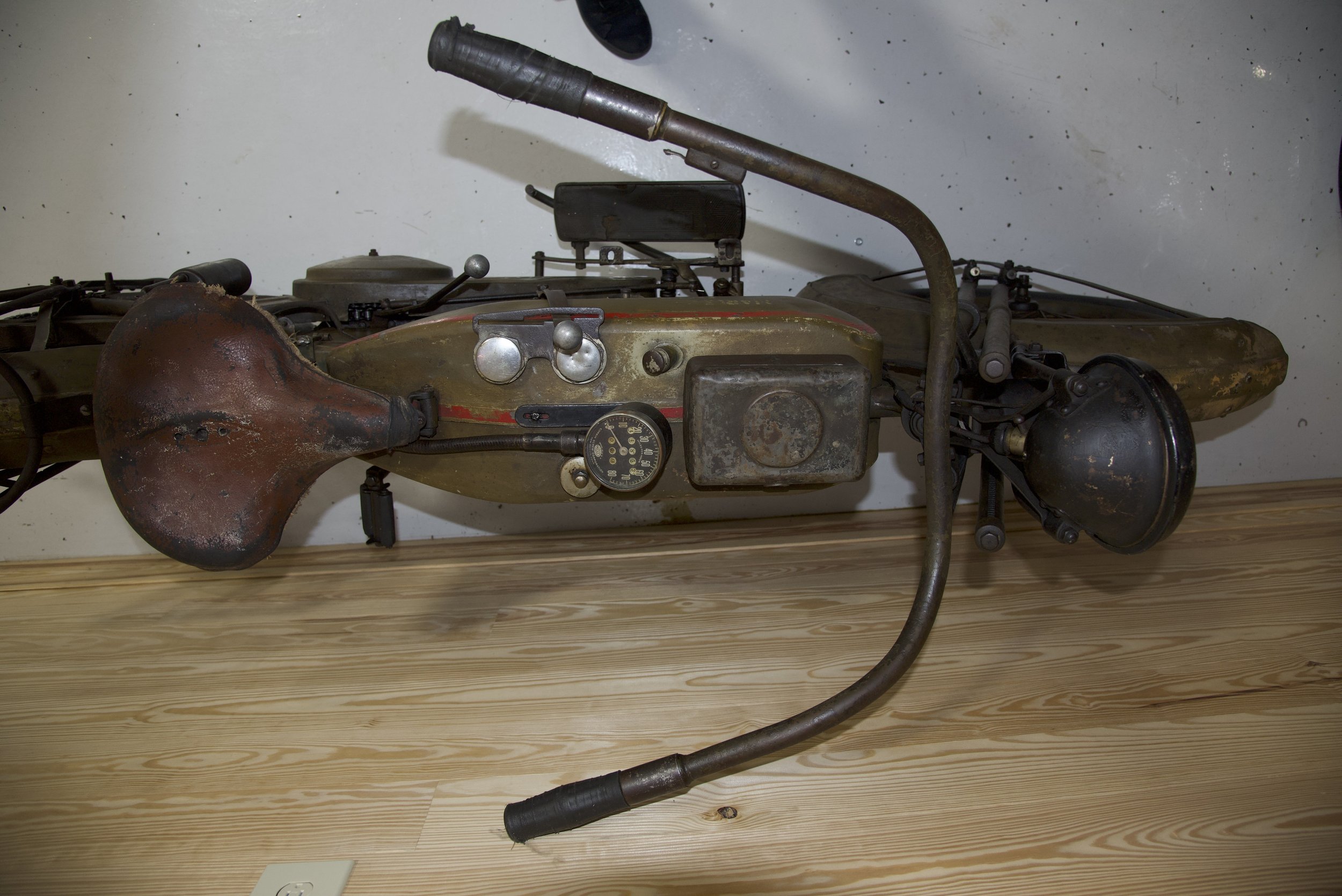
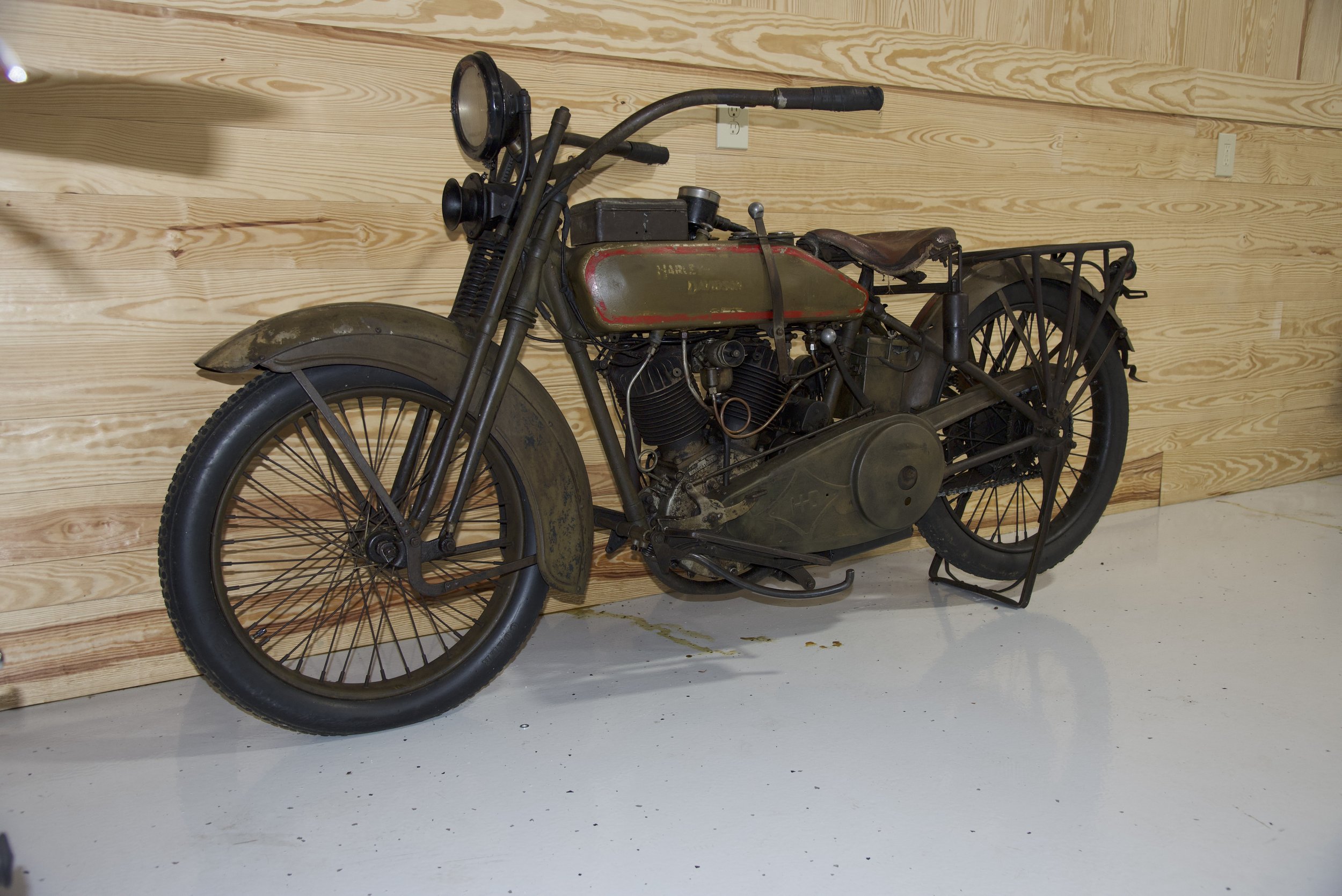
Utilized Harley Davidson’s air-cooled F-head engine
Longitudinal (or inline) 45-degree v-twin cylinder configuration
Total loss oiling system fed by drip oilers
Civilian version of the proven and reliable WW1 military issue
The 1924 V Twin 74 Cubic Inch Harley Davidson JDCA motorcycle is an unrestored example of popular air-cooled bikes that were common in the post-World War 1 era. Using a simple combination of side valve and overhead valve technologies for each cylinder and fed by a single carburetor positioned between the cylinders, the J model Harley was a success from its inception in 1915 through 1929 and was offered in both 61 and 74 cubic inch displacements. With one cylinder positioned behind the other, cooling fins were liberally cast into the cylinders and cylinder heads to regulate engine temperature. The “Intake Over Exhaust” layout (“IOS”) or “F-Head” was actually considered quite efficient at the time - being half-way from a traditional side-valve to a full overhead valve design.
Lubrication to the engine was supplied by drip oiling due to the lack of a recirculating engine oil pump but could be augmented by a hand operated pump by the rider. The system was “total loss” meaning the engine oil passed through the engine and out the exhaust pipe, a very common solution in early internal combustion engines. Intake valves have external push rods that run outside the cylinders adding to the variety of visible moving engine parts, all with the goal of simplicity and easy maintenance. Ignition advance and throttle were handlebar twist grip operated.
Using only a single band style rear brake and lacking any front suspension, the Harleys of the teens and twenties were conceived in simplicity but lacked much comfort despite having a narrow profile and low seat height. With the emergence of low-priced Model T Ford automobiles, the JDCA sold for roughly the same price as a new Ford “tin lizzy” and sales dropped dramatically in the Mid 1920s as families opted for more practical transportation. The bike weighed just under 400 pounds dry, but its 18 hp engine offered a top speed of nearly 75 miles per hour and many JD models found their way into motorcycle competitions and police departments. Performance far exceeded that of a Model T Ford.
The motorcycle shown was an actual “barn find” discovered in the 1990’s with original paint, seat and running gear. It spent several years on display in the office of Buzz Kanter, Editor of American Iron magazine and was brought back to life by Dale Walksler, founder of Wheels Through Time Museum in North Carolina. Kanter often rode the bike to events prior to the bike’s acquisition by the Audrain Collection.
Specifications:
Engine: 74 cu in (1200cc) air-cooled v-twin 4-stroke, single carburetor, aluminum alloy pistons
Transmission: Left-hand shift 3-speed, right-hand throttle (intentionally the opposite of the Indian), foot operated clutch, chain drive
Performance: 18 hp, 75mph top speed
Chassis: Sprung girder front suspension, hard tail frame with sprung seat, single band style rear brake, battery and magneto electrical system with front and rear lighting
Weight: 399 lbs dry weight
